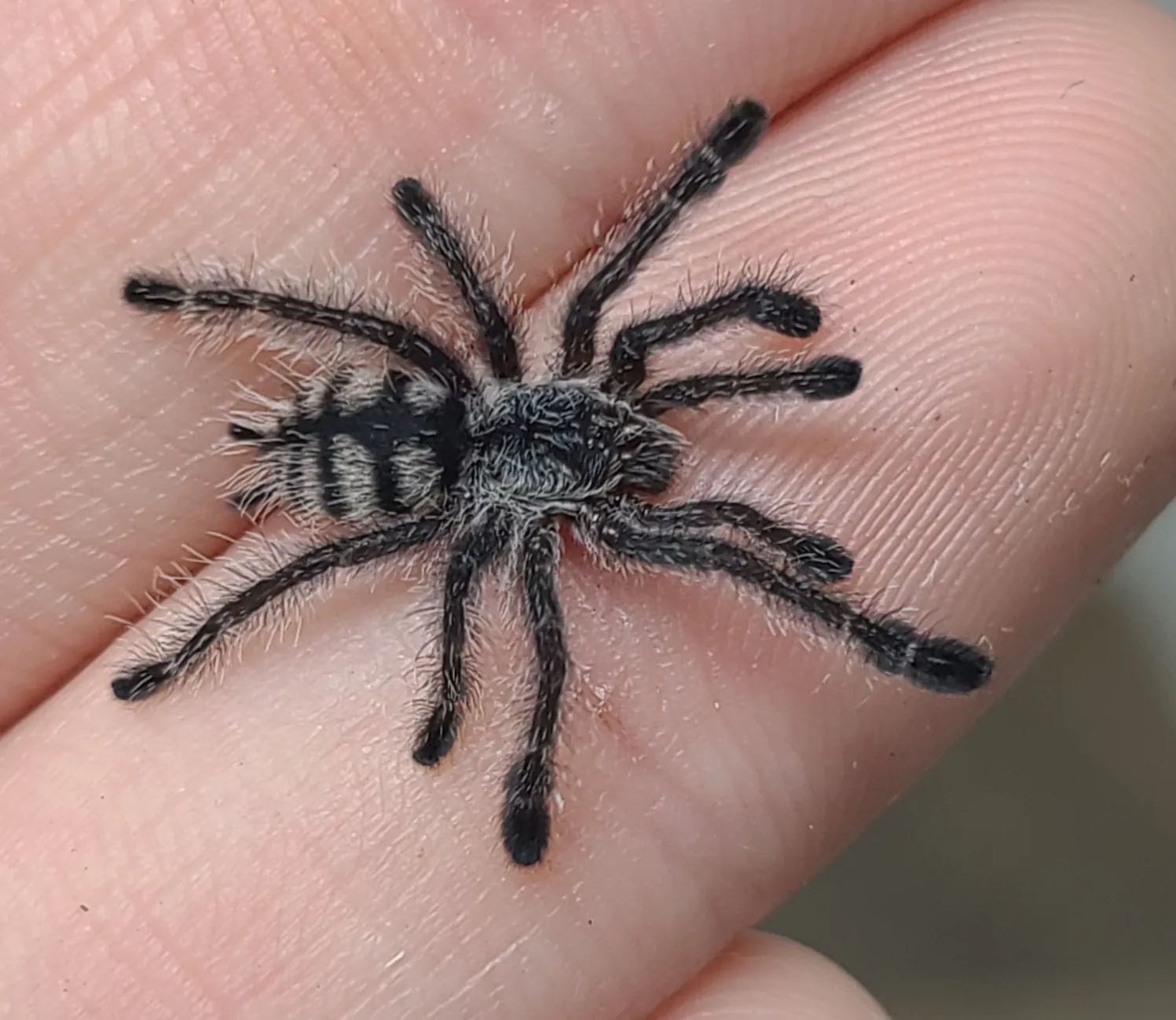Understanding Avicularia Purpurea Size
The Avicularia purpurea, commonly known as the purple tree tarantula, is a captivating species admired for its vibrant coloration and arboreal lifestyle. When considering keeping this species, understanding its size is crucial for providing appropriate housing and care. The size of an Avicularia purpurea is not just a matter of aesthetics; it directly impacts the spider’s well-being and its ability to thrive in captivity. This comprehensive guide delves into every aspect of the Avicularia purpurea’s size, from its initial sling stage to its full adult dimensions, helping you gain a thorough understanding of this fascinating invertebrate. This knowledge is essential for both novice and experienced keepers, ensuring the best possible environment and care for your tarantula.
Factors Influencing Avicularia Purpurea Size
Several factors influence the ultimate size of an Avicularia purpurea. Genetics play a fundamental role, with some individual tarantulas naturally predisposed to grow larger than others within the same species. Proper care practices are equally critical. Adequate nutrition, consistent feeding schedules, and a suitable habitat all contribute significantly to a tarantula’s growth potential. Temperature and humidity levels also influence growth rates, as these ectothermic creatures rely on their environment to regulate their metabolism. Stress and illness can stunt growth, so a stress-free environment is crucial. The quality of care provided during the early stages of life has a profound effect on the long-term size and health of the tarantula. Careful consideration of all these factors is essential for ensuring your Avicularia purpurea reaches its full potential.
Age and Growth Stages
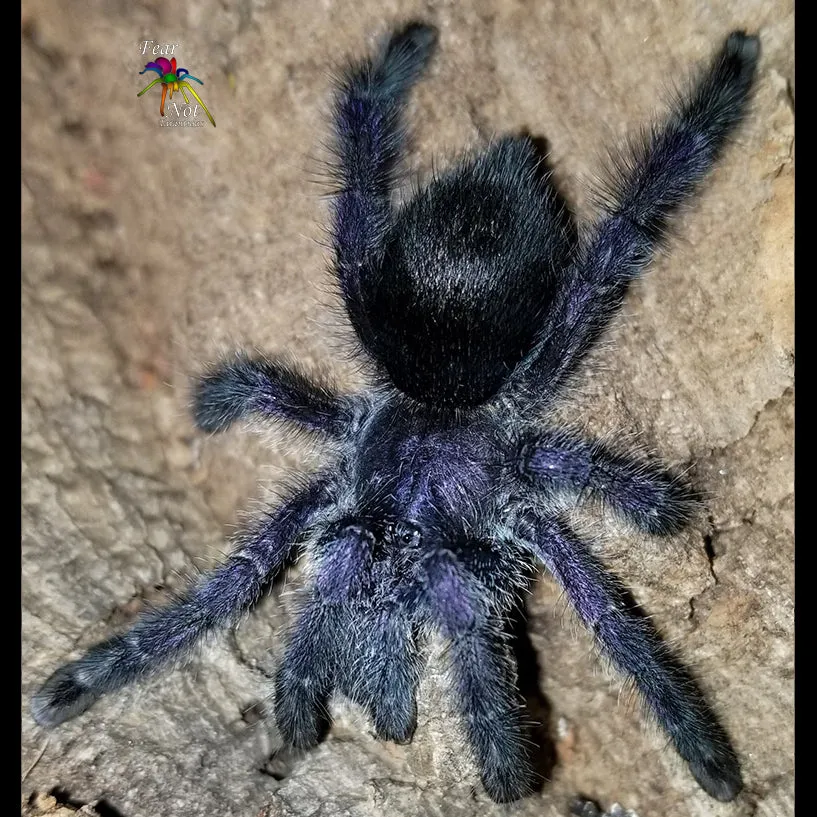
Avicularia purpurea tarantulas, like all spiders, grow by molting. This process involves shedding their exoskeleton to accommodate their increasing size. The growth stages are broadly categorized, from the tiny sling stage, through juvenile phases, to the adult stage. Slings are incredibly small, often less than an inch in leg span. As they mature, they undergo multiple molts, each time growing larger. Juvenile tarantulas steadily increase in size, with the rate of growth often accelerating as they approach adulthood. The frequency of molting decreases with age, with adults molting less frequently. Determining the age of a tarantula can be challenging, but observing its size relative to the molting frequency provides clues about its life stage. The adult stage is reached when the tarantula is sexually mature, at which point, the tarantula’s size reaches its full potential.
Diet and Nutrition’s Impact
Diet plays a significant role in the size and overall health of an Avicularia purpurea. A well-balanced diet provides essential nutrients needed for growth and development. These tarantulas are primarily insectivores, and their diet should consist of appropriately sized prey items. Crickets, roaches, and mealworms are common choices, but variety is important. Overfeeding can sometimes lead to accelerated growth and potential health issues, so moderation is key. The nutritional content of the prey also matters; gut-loading insects before feeding them to your tarantula ensures they receive a greater intake of vitamins and minerals. Providing fresh water is equally important to support their molting process. Nutritional deficiencies or an improper diet can hinder growth, so keepers must ensure their tarantulas receive a balanced and sufficient diet to reach their maximum size and enjoy optimal health. Consider adding calcium and other supplements if required by your tarantula.
Environmental Conditions and Size
The environment significantly influences the size and well-being of an Avicularia purpurea tarantula. Temperature and humidity are critical factors. Maintaining the correct temperature range is essential for their metabolism. Higher temperatures generally lead to faster growth rates, but excessive heat can be dangerous. Similarly, humidity levels need to be maintained at an appropriate level to support molting and prevent dehydration. The enclosure itself must be suitable. A well-ventilated enclosure with appropriate substrate and climbing structures is essential for their arboreal lifestyle. The size of the enclosure also needs to be considered; a tarantula will not thrive in a space that is too small. Stress can be a significant factor that affects growth. Proper environmental conditions will also reduce stress in the tarantula. Stable and appropriate conditions will allow the tarantula to grow to its full potential. Regular cleaning and maintenance of the enclosure will help to maintain a healthy environment.
The Average Size of Avicularia Purpurea Tarantulas
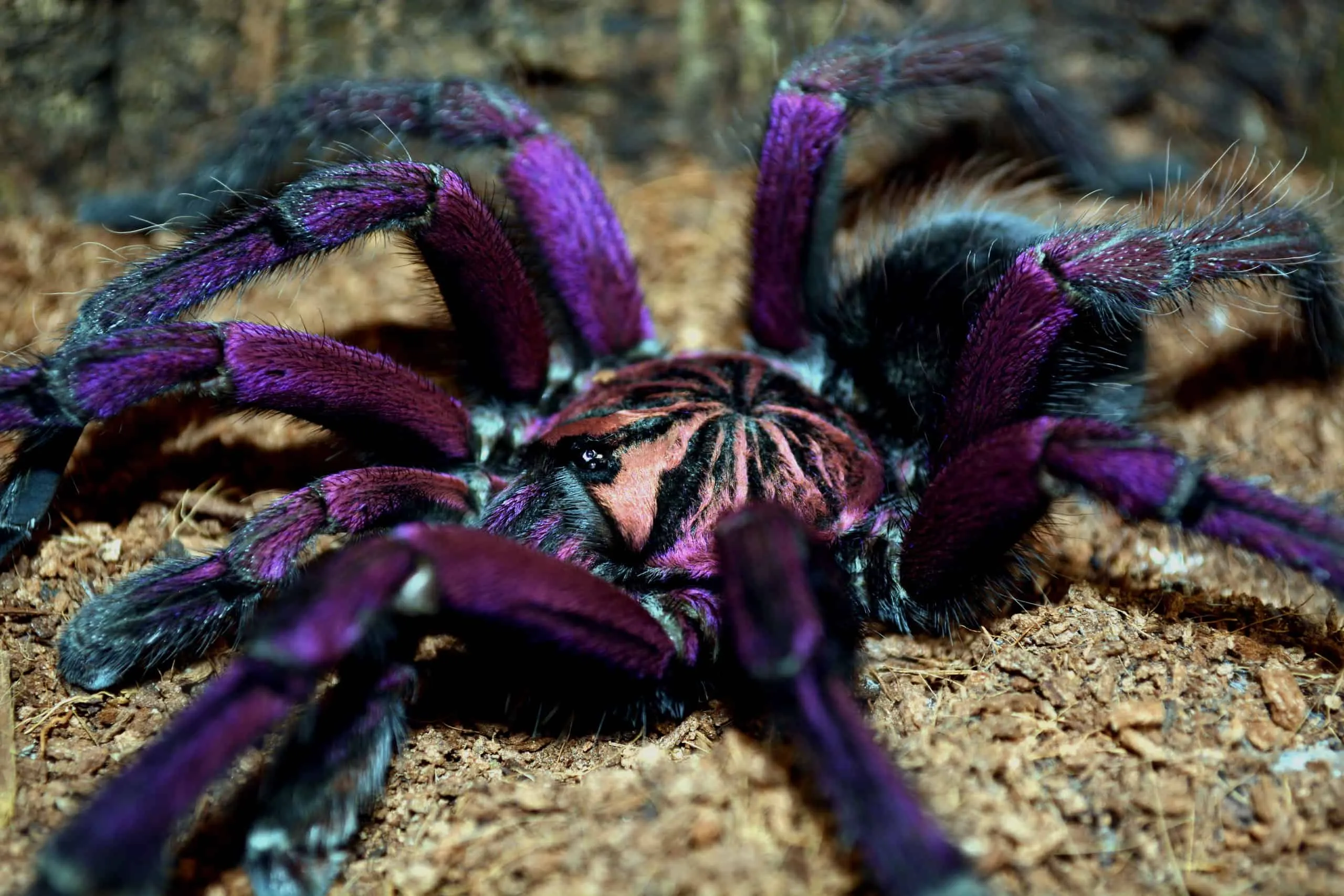
Avicularia purpurea tarantulas are known for their relatively moderate size compared to other tarantula species. Adult females typically range from 5 to 6 inches in leg span, while males are generally smaller, often reaching 4 to 5 inches. These measurements represent the maximum size they are likely to reach under optimal conditions. Individual variation occurs, and some tarantulas may be slightly larger or smaller than average. The size is an important consideration when designing the enclosure, as it must provide sufficient space for the tarantula to move, hunt, and establish a territory. When housing multiple tarantulas, understanding size differences is critical to prevent potential cannibalism or aggression. The average size provides a useful guideline for new keepers, but it is essential to remember that environmental factors can influence the final size. Monitoring your tarantula’s growth over time will give you a clear understanding of its health and well-being.
Male vs Female Size Differences
Sexual dimorphism is evident in the Avicularia purpurea, with females typically larger and heavier than males. Female tarantulas continue to grow throughout their lives, while male tarantulas reach their adult size after their final molt. Male tarantulas tend to have longer legs, a slimmer build, and develop tibial hooks used for mating. The size difference is noticeable, particularly once the tarantulas reach maturity. Adult females will generally have larger leg spans and a more robust appearance. Understanding the size differences helps in sexing tarantulas. When purchasing, you can often use the size of the tarantula as an early indicator of its sex. This information is crucial for those interested in breeding, as only mature adults are capable of reproduction. Knowing the size differences will help in habitat design. The enclosure should accommodate the female’s size, as the female will typically remain in the habitat for a longer period.
How to Measure Your Tarantula
Accurately measuring your Avicularia purpurea tarantula is a simple but important aspect of tarantula keeping. The most common measurement is the leg span, which is the distance from the tip of one leg on one side to the tip of the opposite leg, when the tarantula is fully extended. This measurement is best taken when the tarantula is calm and on a flat surface. Use a soft ruler or a piece of paper and a pen to make sure you are measuring carefully without harming the spider. You should avoid forcing the tarantula to extend its legs. If your tarantula is uncooperative, it is best to try again later. Record the measurements regularly, as this information is useful in monitoring your tarantula’s growth and overall health. Documenting the measurements can help you detect any growth issues or potential health problems. A record of the size can also be helpful when comparing your tarantula’s development with averages for the species. The molted exoskeleton can also be measured after a molt.
Providing Optimal Conditions for Growth
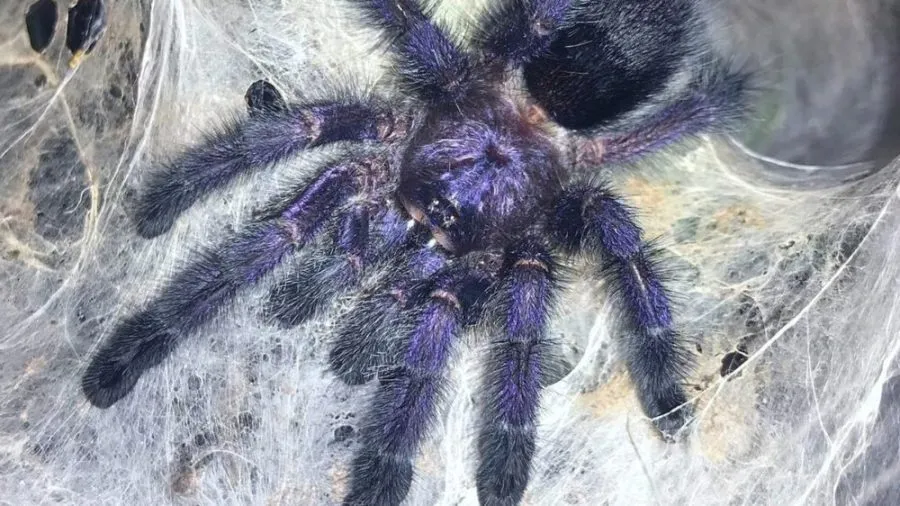
Creating the ideal environment is essential for maximizing the growth potential of your Avicularia purpurea tarantula. This involves maintaining a balance of temperature, humidity, and appropriate substrate. Ensure the enclosure is appropriately sized for the current size of the tarantula. Providing a heat source is crucial. A reliable heat mat or a low-wattage bulb can maintain the correct temperature. Humidity is essential, and misting the enclosure regularly, or providing a water dish, is often enough. Appropriate ventilation is also important to prevent mold and maintain healthy air quality. Providing hiding places, such as cork bark or artificial plants, allows the tarantula to feel secure and reduce stress. The right environment will help the tarantula thrive. Regularly check all parameters of the environment to ensure the optimal conditions are maintained for the tarantula’s growth.
Creating a Suitable Habitat
The habitat for your Avicularia purpurea tarantula should be designed with its arboreal nature in mind. Tall enclosures are ideal, allowing for climbing and web-building behavior. The enclosure size should increase as the tarantula grows. The substrate should be a mixture of coco fiber, vermiculite, or peat moss, providing a moisture-retentive base. Provide climbing structures like branches, cork bark, and artificial plants to mimic their natural habitat. Ensure good ventilation by incorporating cross-ventilation to prevent stagnant air and mold growth. Regularly clean the enclosure to remove any uneaten food and waste. Proper ventilation is essential for preventing the build-up of harmful gases. The habitat design should provide both hiding places and open spaces. The enclosure should be secure, with a tight-fitting lid to prevent escape. Creating a well-designed and secure habitat will significantly contribute to your tarantula’s well-being and ensure its proper growth.
Feeding and Hydration
Proper feeding and hydration are paramount for the healthy growth of your Avicularia purpurea. Feed your tarantula appropriately sized insects, such as crickets, roaches, or mealworms. The frequency of feeding depends on the age and size of the tarantula, with slings needing to be fed more often than adults. Ensure that prey insects are properly gut-loaded before being offered. Always provide a shallow dish of fresh, clean water. Misting the enclosure regularly helps to maintain humidity, which aids in molting. Monitor your tarantula’s feeding habits; a loss of appetite can indicate an issue with the environment. Remove any uneaten food after 24 hours to prevent the build-up of mold and bacteria. Feeding should be done in a way that minimizes the disturbance of the tarantula. A well-hydrated and well-fed tarantula will show healthy growth and vitality.
Monitoring and Troubleshooting Growth Issues
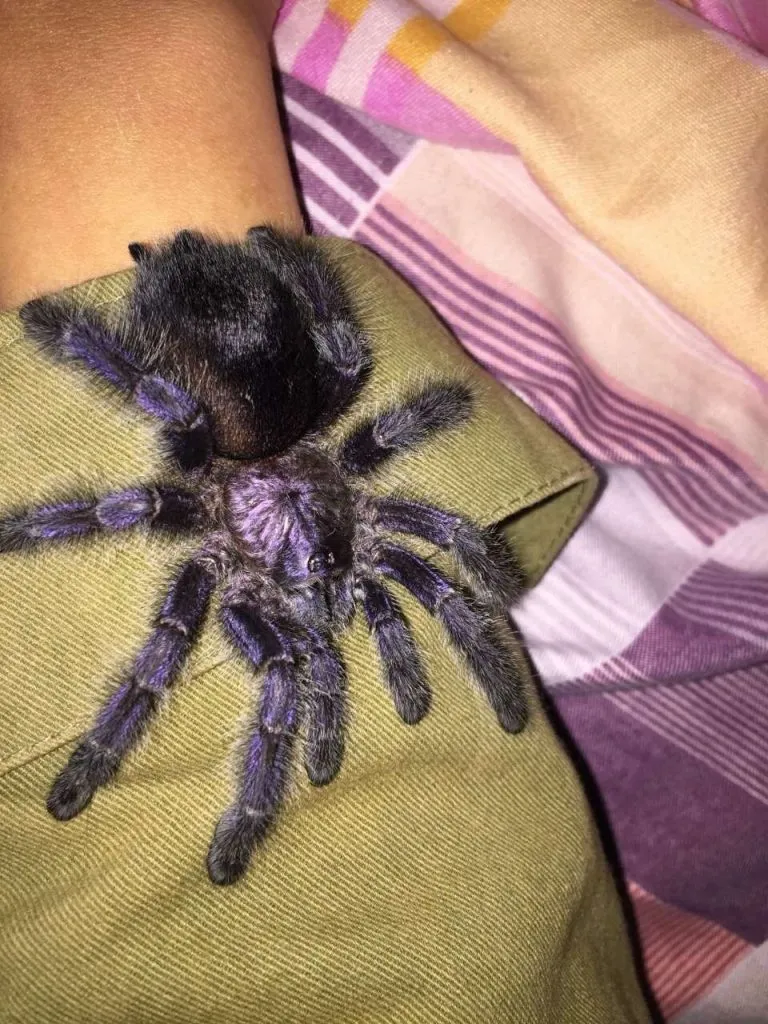
Regular monitoring is crucial for identifying and addressing any potential growth issues in your Avicularia purpurea. Keep a record of your tarantula’s size, feeding habits, and molting frequency. Be observant of the tarantula’s behavior, as changes in activity levels or appetite can signal underlying problems. Stunted growth can be caused by various factors, including inadequate nutrition, incorrect environmental conditions, or stress. If you notice slow growth, review all aspects of the care. Adjust the temperature, humidity, or diet as needed. Seek advice from experienced keepers or a veterinarian if you are concerned. Address any health issues promptly. Timely intervention is essential for ensuring the tarantula thrives. Early detection and a proactive approach will help to identify and resolve the issues. A healthy tarantula will result in a healthy and proper growth pattern.
Common Size-Related Concerns
Several size-related concerns may arise when keeping Avicularia purpurea. One common concern is a tarantula that appears to be growing too slowly. This may be due to issues like inadequate nutrition, insufficient heat, or excessive stress. Another concern is a tarantula that is smaller than expected for its age. This can be a result of genetics or less-than-optimal care. Obesity can also be an issue, especially in females. This may be the result of overfeeding. Regularly monitor your tarantula’s condition and adjust its care as needed. Proper care is essential to mitigate potential problems. It is important to consult with experienced keepers or a veterinarian if you are concerned about any health problems.
Is My Tarantula Too Small
Determining whether your Avicularia purpurea tarantula is too small involves evaluating its growth rate, age, and overall health. Slings and juveniles grow relatively quickly, while adults grow much slower. If your tarantula is consistently smaller than others of the same age, consider factors such as diet, environmental conditions, and stress levels. Ensure your tarantula receives a balanced diet. Check that the enclosure’s temperature and humidity levels are appropriate. Make sure the enclosure provides hiding places. If your tarantula is consistently smaller than average, assess all these conditions. Consult with experienced tarantula keepers. These specialists can offer guidance. If, after reviewing all these factors, you are still concerned, consult a veterinarian who specializes in exotic animals. They can provide a comprehensive health assessment.
Is My Tarantula Too Big
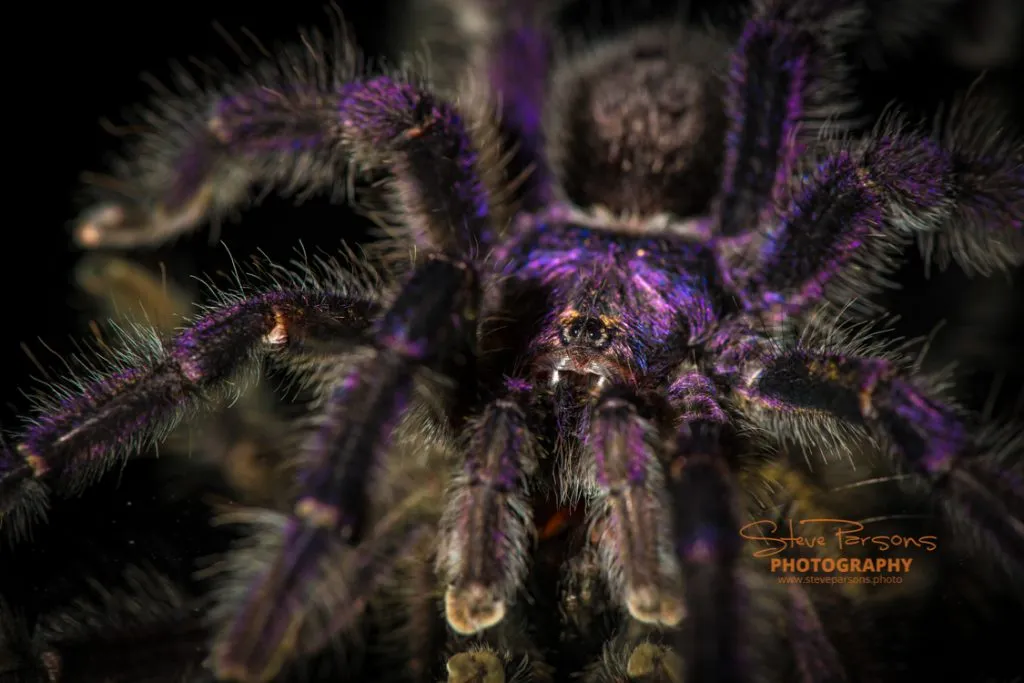
It is less common for an Avicularia purpurea tarantula to be ’too big,’ as the species has a natural size range. If your tarantula appears significantly larger than the average for its sex, genetics may be the cause. Overfeeding can sometimes contribute to a slightly larger size, although it’s generally not a major concern. The enclosure’s size should match the tarantula’s size to ensure that the tarantula has enough space. Ensure that the enclosure is not overcrowded. Monitor the tarantula’s overall health and behavior. Excessive size is rarely a problem. Maintaining a proper diet and a stress-free environment is important to ensure its health. The primary focus is on the overall well-being, and, if the tarantula is healthy and active, its size is usually not a cause for concern.
Conclusion
Understanding the size of your Avicularia purpurea tarantula is crucial for its care and well-being. From the factors influencing size to monitoring growth and addressing potential concerns, this guide provides comprehensive insights. By paying attention to your tarantula’s needs, you can provide the ideal environment for it to thrive. Always prioritize a balanced diet, a suitable habitat, and a stress-free environment. Regular monitoring, combined with a proactive approach, is essential for addressing any issues. With the right knowledge and care, you can enjoy the beauty and fascinating characteristics of your Avicularia purpurea tarantula for many years to come. Remember that responsible tarantula keeping involves continuous learning. Always consult with experienced keepers or professionals when needed to ensure the best possible care for your pet. By following these guidelines, you can guarantee a healthy and thriving Avicularia purpurea tarantula.
